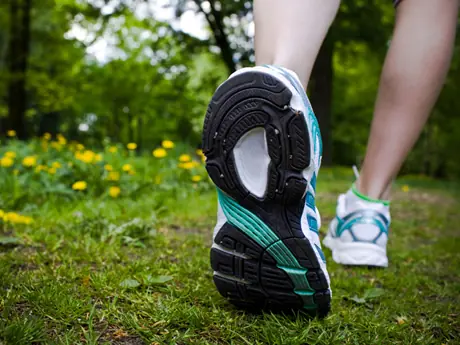
Most people think walking doesn't cause injury and that anyone can go out and complete a walking event with little or no preparation. However, walking is a fitness activity that deserves the same kind of attention to technique and training as any other sport.
We all walked beautifully as children, but few of us have the same healthy, flexible bodies we had when we were young, and years of poor movement patterns and lifestyle habits have changed our bodies.
For instance, when children walk, they tend to lead with their upper bodies. They allow gravity to help pull them along. Adults, on the other hand, usually lead with their hips and pull themselves forward with their legs. This is a big job for small muscles, and walking long distances this way can be a recipe for pain and injury.
More: 5 Ways to Make Your Walks a Workout
This is where the Chi Walking technique comes in.
In Chi Walking, we say "you don't have to use your legs for propulsion." You might wonder, "How does this work?" Of course, we all use our legs to walk, but we don't have to rely on them as much as we think. Many walkers tend to overwork the muscles of their lower legs by pushing off too hard with their toes. This can lead to shin splints, plantar fasciitis, sore toes, calf soreness, or a burning sensation on the balls of the feet.
To avoid overuse and impact injuries to the lower legs, Chi Walking teaches us how to redirect the workload of propulsion to our core muscles around the pelvis and lower trunk area instead. The good news is that you don't have to do a thousand crunches to build a strong core. You can improve your core strength while you're walking, standing, doing the dishes, and even sitting at your desk.
More: How to Increase Your Endurance by Walking
Here are a few simple exercises you can do during your event training and throughout the day:
Level Your Pelvis
Stand up straight with your feet facing forward and shoulder-width apart. Place one hand on your lower abdominals and the other hand on your lower back. Engage your lower abdominal muscles (if you can't feel them engage, just cough) and gently tuck your lower back. Imagine your pelvis like a bowl of water you're trying to balance—if tipped too far forward or back, the water will spill.
- 1
- of
- 2
About the Author

Danny Dreyer is the creator of ChiRunning? and ChiWalking?, revolutionary forms of moving that blend T'ai Chi with running and walking. ChiRunning and ChiWalking by Danny and Katherine Dreyer are No. 1 sellers with over 350,000 copies sold. Chi Marathon hits shelves March 2012. The ChiRunning app is now available for iPhone (Android version available Fall 2013). As an accomplished ultra marathoner, Danny speaks at prestigious wellness events across the country. He has taught training groups, including the AIDS Marathon and Team in Training and USA/FIT. Danny, along with more than 180 Certified Instructors, holds capacity-filled clinics around the world. Danny's lifestyle is steeped in holistic living, meditation, and personal wellness and is the foundation of what he teaches.
Get ACTIVE on the Go


Couch to 5K®
The best way to get new runners off the couch and across the finish line of their first 5K.
Available for iOS | Android








Discuss This Article